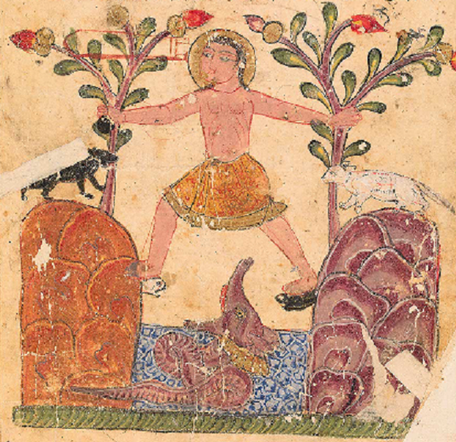Early Modern Hajj Accounts as Framed Narratives
DOI:
https://doi.org/10.5617/jais.10129Abstract
It is not easy to gather the corpus of Arabic travelogues, as they developed in their diversity during several ages and in many parts of the Muslim world, within a single generic demarcation. This is even more true of hajj travelogues, which on the one hand represent a sub-genre of the corpus of travel literature, but may also be considered a separate genre within the tradition of religious literature. Hajj travelogues have appeared in many different forms which defy strict generic boundaries. In this article the author explores the possibility of conceptualizing hajj travelogues as framed narratives to develop a categorization of the corpus as a separate genre, or at least a substantial sub-genre. He proposes to recognize the interaction between a discursive, religious, frame and a spatiotemporal frame as the main common determinant of the corpus. This interaction could also be a starting point for an analysis of this type of text. Two texts from the seventeenth century are discussed as examples of this approach: the hajj travelogues of the Moroccan scholar al-‘Ayyāshī and the Syrian Sufi and scholar al-Nābulusī.
Key words: Framed narratives, hajj travelogues, genre, travel literature, religious discourse, al-‘Ayyāshī, al-Nābulusī
Downloads
Published
How to Cite
Issue
Section
License
For content published in editions of JAIS before 2002, copyright belongs to the author. Content published between 2002 and 2017 is copyrighted by Edinburgh University Press (reproduced on FRITT with permission). Text and other material published in these journal volumes can only be shared and republished with written permission from the rights holders.
Starting from 2017, the content published in JAIS is - unless otherwise is stated - licensed through Creative Commons License Attribution 4.0: https://creativecommons.org/licenses/by/4.0/. Through this licence content can be copied and distributed but also remixed, transformed and built upon for any purpose under the following conditions:
Attribution — You must give appropriate credit to the creators of materials published in JAIS, provide a link to the license, and indicate if changes were made. You may do so in any reasonable manner, but not in any way that suggests the licensor endorses you or your use.
No additional restrictions — You may not apply legal terms or technological measures that legally restrict others from doing anything the license permits.
Notice: No warranties are given. The license may not give you all of the permissions necessary for your intended use. For example, other rights such as publicity, privacy, or moral rights may limit how you use the material.
Authors who publish in JAIS accept the following conditions:
Author(s) retains copyright to the article and give JAIS right to first publication while the article is licensed under the Creative Commons CC BY 4.0. This license allows sharing the article for non-commercial purposes, as long as the author and first publishing place JAIS are credited. The license does not allow others to publish adapted versions of the article without the author's permission.
The author is free to publish and distribute the work/article after publication in JAIS, as long as the journal is referred to as the first place of publication. Submissions that are under consideration for publication or accepted for publication in JAIS cannot simultaneously be under consideration for publication in other journals, anthologies, monographs or the like. By submitting contributions, the author accepts that the contribution is published in both digital and printed editions of JAIS.



